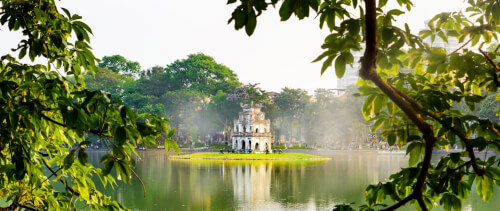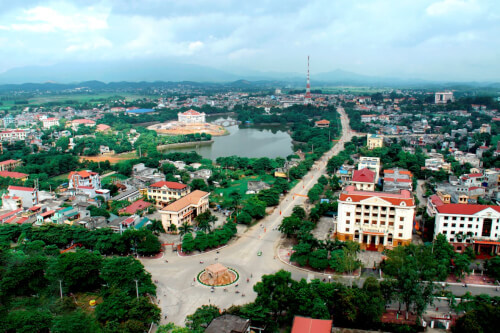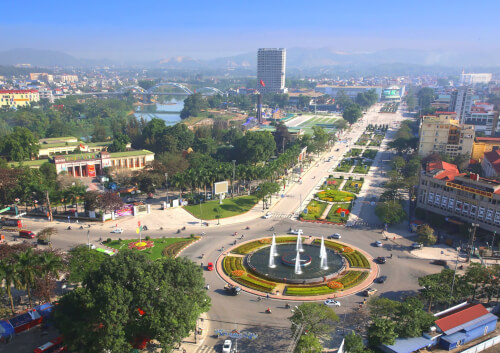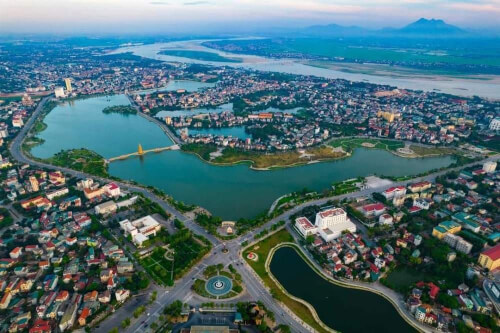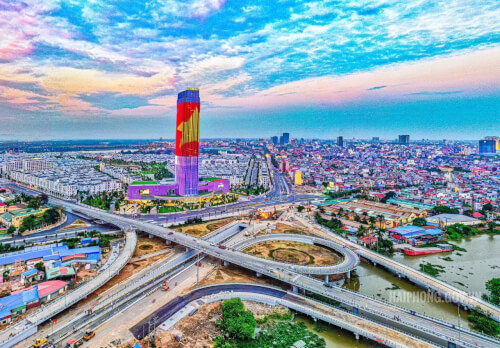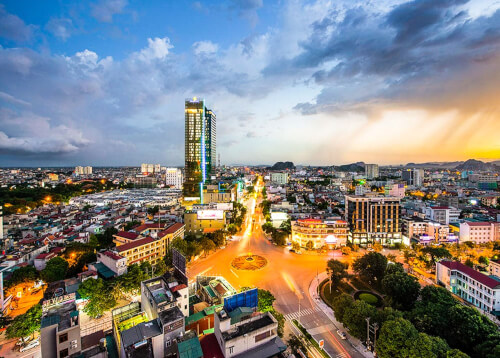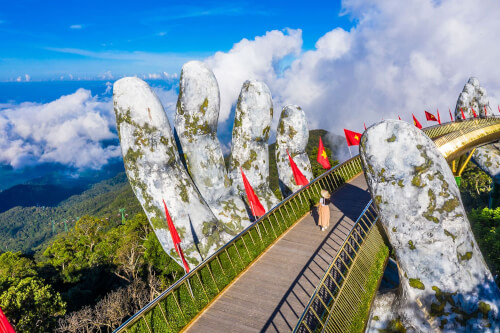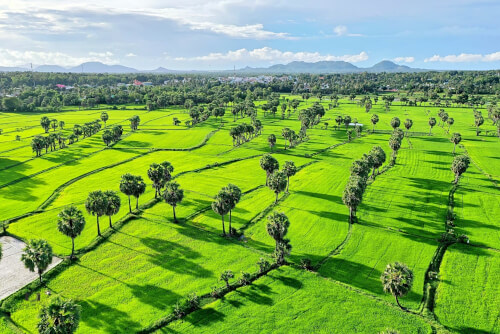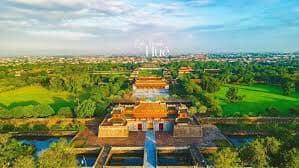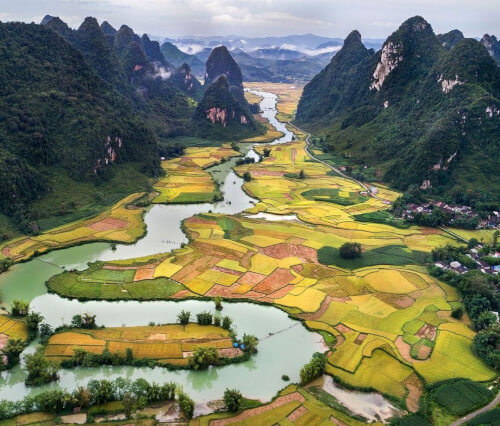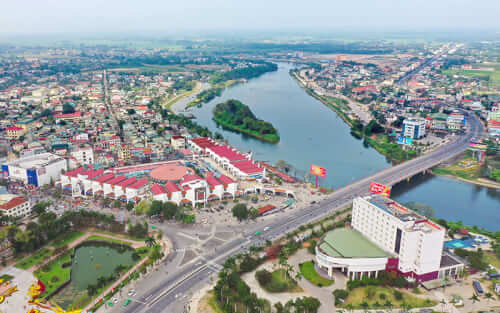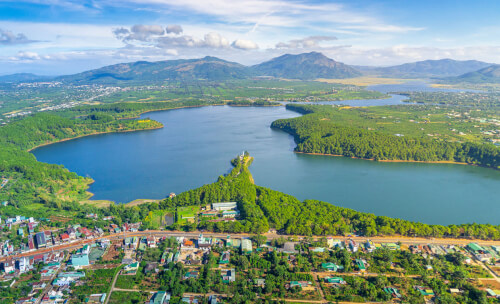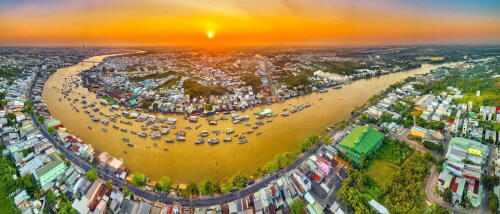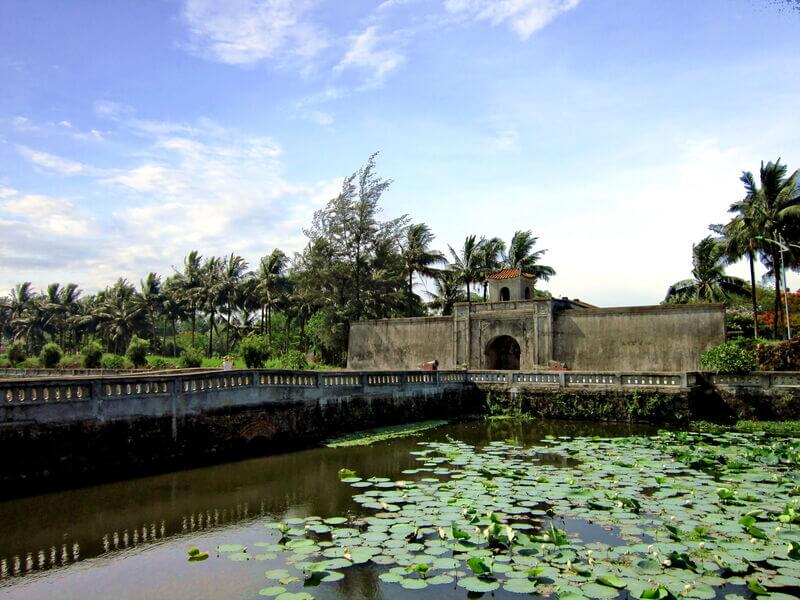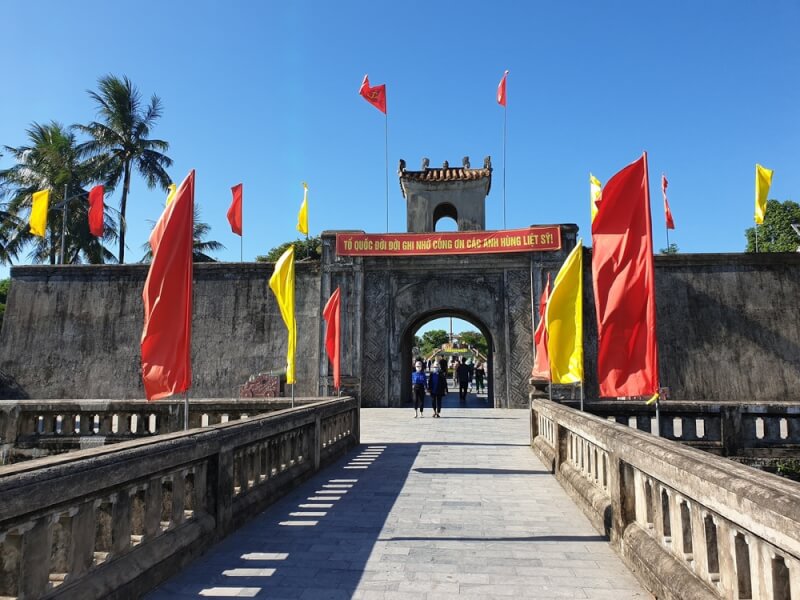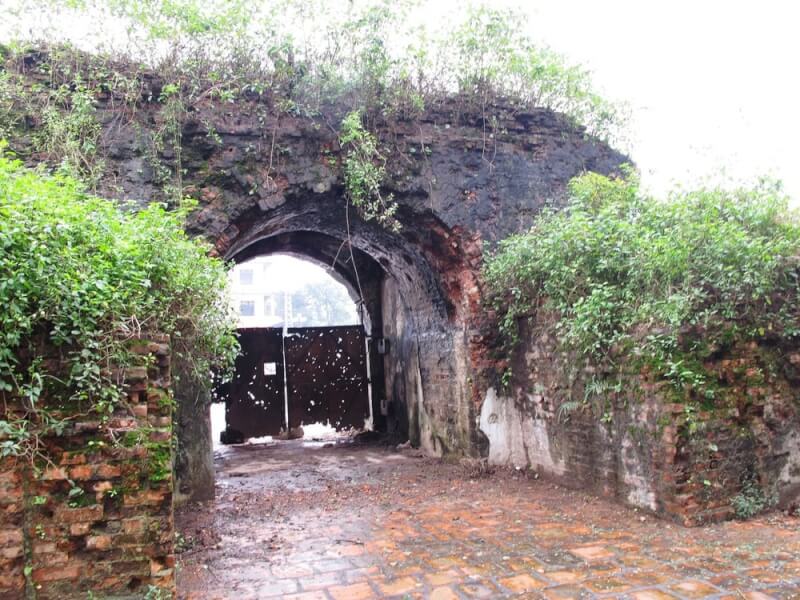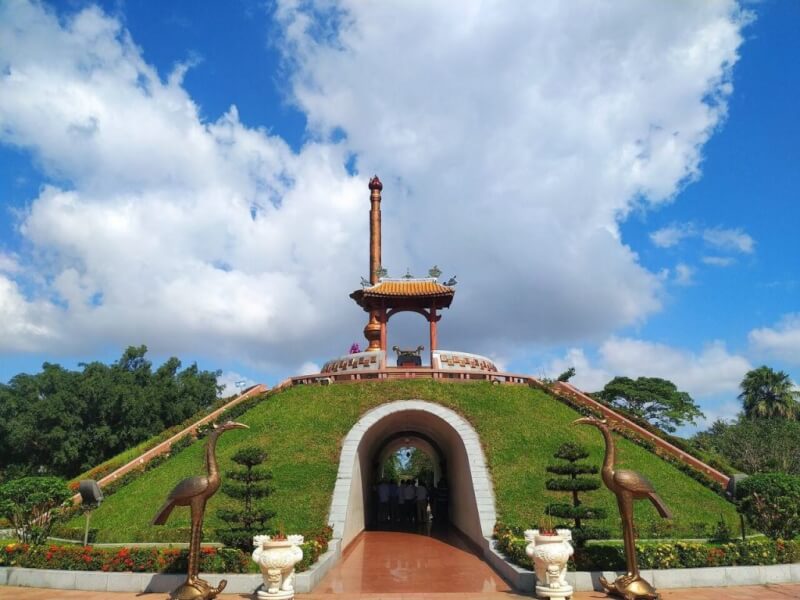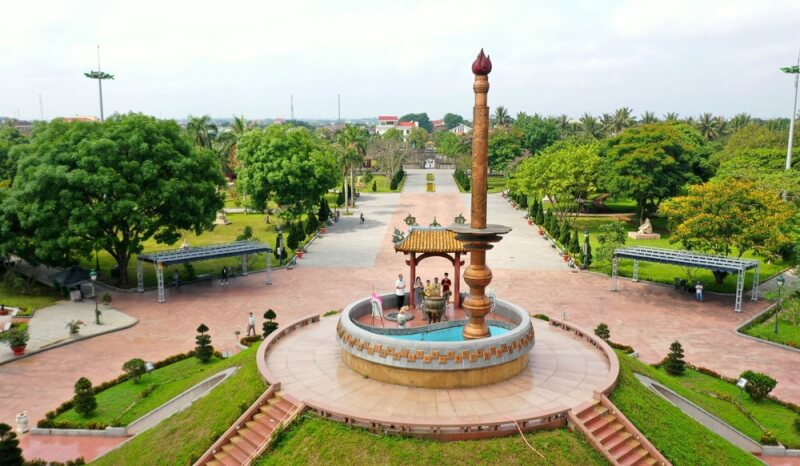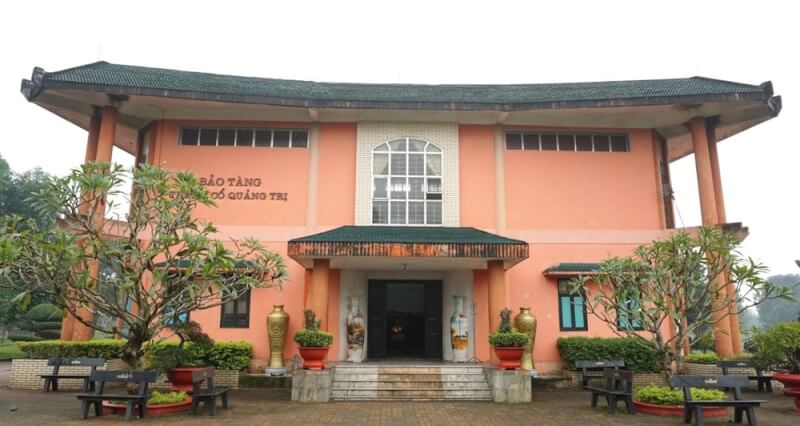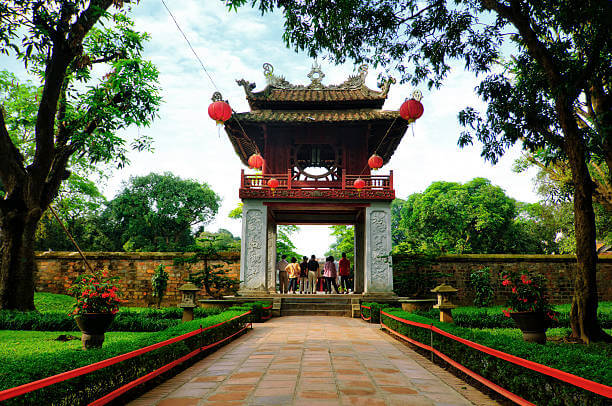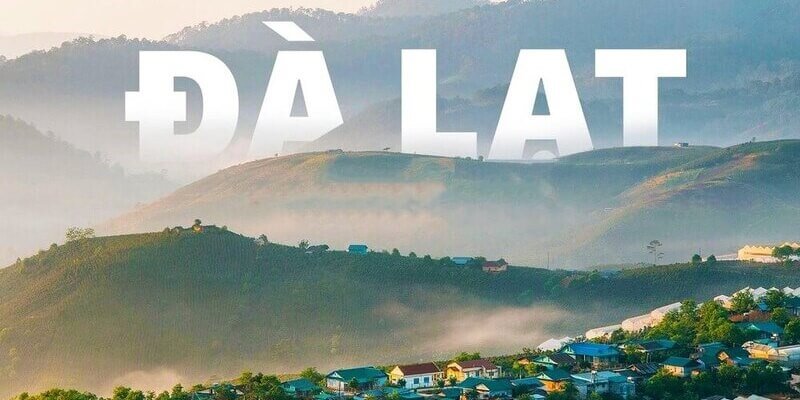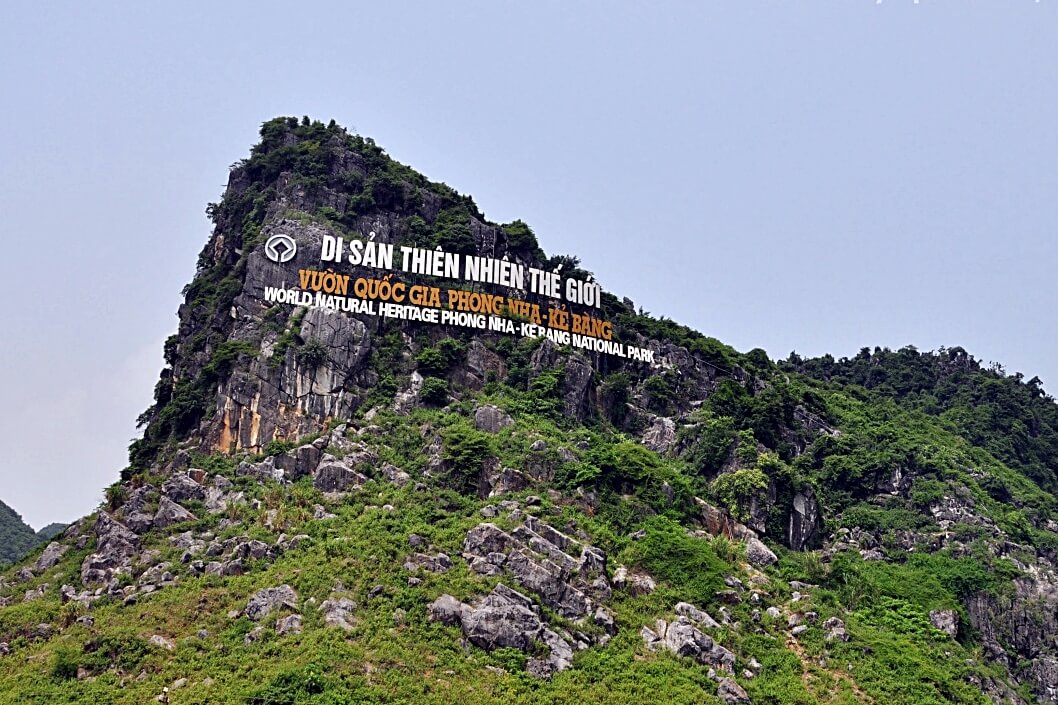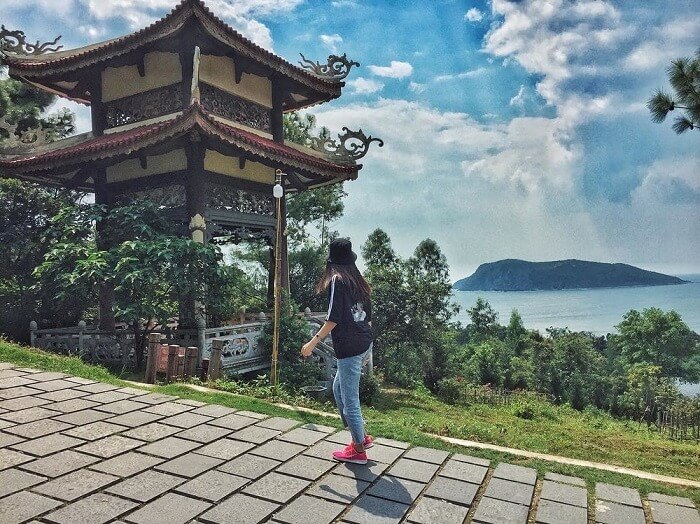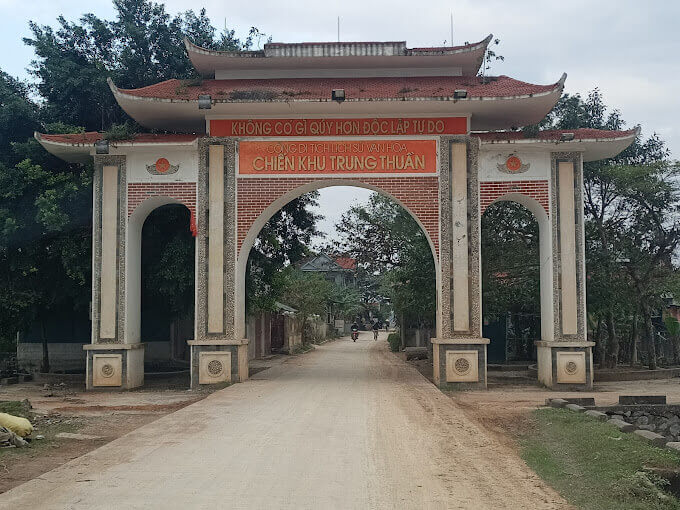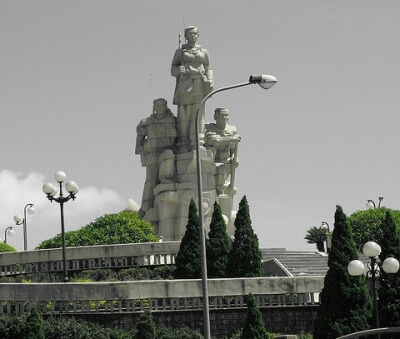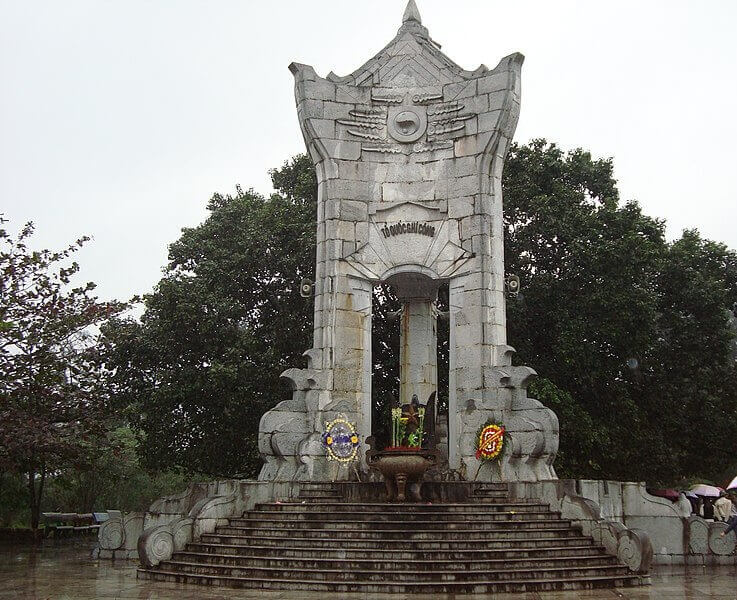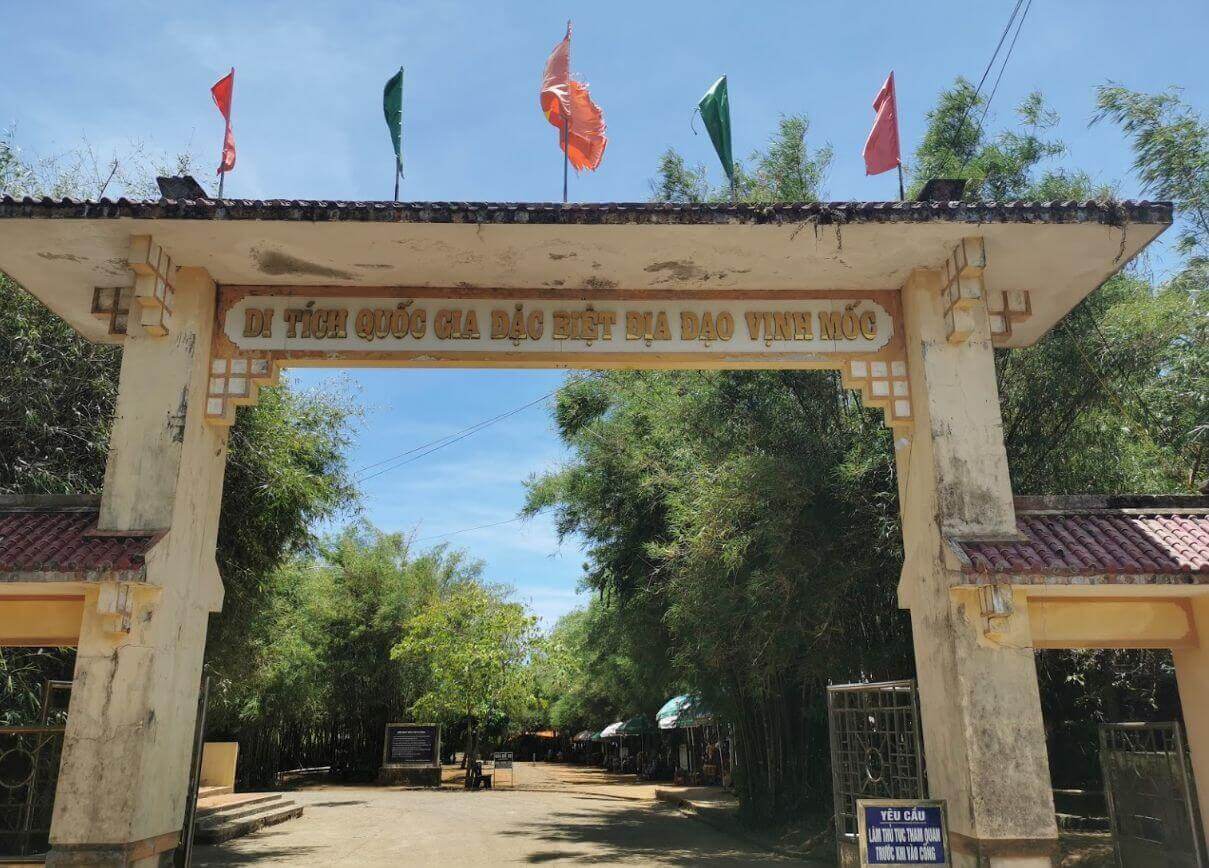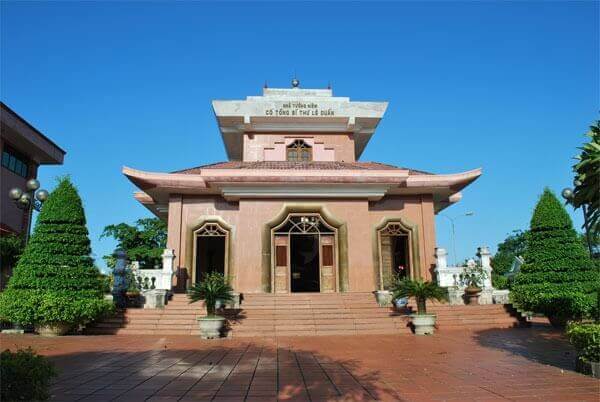Quang Tri Ancient Citadel is a destination that attracts tourists not only because of its unique architecture but also heroic historical stories associated with the heroic struggle of our nation. Quang Tri Ancient Citadel (also known as Quang Tri Ancient Citadel) is located in Quang Tri town, Quang Tri province. During the Nguyen Dynasty, this place was the royal headquarters and a military stronghold in Quang Tri province. During the French colonial period, the Ancient Citadel was the center of Quang Tri province. Until the General Offensive and Uprising in 1972, the whole world knew about the fierce and heroic 81-day and night-long war of the Vietnamese people right here. On December 9, 2013, Quang Tri Ancient Citadel was ranked as a special national relic and became a must-see attraction during your trip to Quang Tri. Quang Tri Ancient Citadel was built during the reign of King Gia Long, initially located in Trieu Thanh commune, Trieu Phong district, Quang Tri province. In 1809, the king moved the citadel to its current location. During this period, the citadel was still covered with soil. In 1837, King Minh Mang had the citadel rebuilt with bricks. Inside the citadel are works serving the living and working of agencies of the administrative apparatus at that time, including: Palace, Flag Tower, Tuan Phu Palace, Prosecutor's Palace, Bo Main Palace, Soldiers' Palace, Procuratorate, Military Camp, Kitchen, Warehouse, Examination Hall, Prison. In the early 20th century, after placing a "protectorate" government on Quang Tri, the French colonialists built a series of works inside to serve the ruling apparatus such as prisons, police stations, command posts... After the war, the relics were restored to sections of roads and city walls damaged by bullets. The four main gates were redone. The central area of the Ancient Citadel was built with a memorial and a common grave for thousands of soldiers who heroically left the motherland. In the southwest corner of the citadel, a museum was built to display relics, artifacts and recreate the fierce scenes of the war. Quang Tri Ancient Citadel was built in the familiar Vietnamese citadel architecture style. The citadel has a square shape with a height of more than 4m, the base is 12m thick and the perimeter of the wall is more than 2km. Surrounding the citadel is a solid moat system, and the four corners of the citadel are four fortresses jutting out. The citadel's walls were built solidly with large-sized burnt bricks, bonded with a mixture of lime, molasses and some other additives. The East, West, South, and North have four main doors. The path leading to the relic and the courtyard inside the citadel are paved with cement and planted with grass. To the west of the Ancient Citadel is the road leading from the right gate of the citadel straight to the banks of the Thach Han River, parallel to the bell towers, large parks and squares and flower-floating docks on both sides of the river. The bell tower was inaugurated on April 29, 2007. The tower is nearly 10 meters high, above it hangs a bronze bell with a height of 3.9 meters and a diameter of 2.15 meters, weighing nearly 9 tons. Bells are rung on holidays, full moon days... to commemorate the souls of martyrs. The memorial is located in the center of the monument and is also a common tomb, designed according to the concept of yin and yang philosophy with an octagonal shape symbolizing the eight trigrams, with four ascending paths symbolizing the four images and a double floor for offering incense. Above the second floor is a stylized communal roof with a traditional tai chi vase design. The memorial has 81 steps to climb, symbolizing the 81 days and nights of fire in the Ancient Citadel. In addition, to go up to the memorial, visitors must go through a total of 81 steps, symbolizing 81 days and nights of fierce fighting at Quang Tri Citadel. To the southwest of the relic is the Quang Tri Citadel Museum, which was built to preserve and display historical relics, letters sent home by young soldiers to their families, and statues recreating fierce war scenes. Quang Tri Ancient Citadel today still preserves a number of ancient works such as underground tunnel systems, city gates, temples and ancient prisons. Everything is covered with a layer of moss and trees, adding to the quiet look of the relic. Besides, you also have the opportunity to learn about the philosophy of yin and yang in the architecture of the Ancient Citadel. On Thanh's campus as well as the suburban area, there are many memorial works such as memorials, bell towers, museums, parks, squares... for visitors to experience and save memorable memories with friends and relatives. When coming here, visitors will relive the heroic moments of the past through meaningful and solemn activities such as offering incense to commemorate fallen heroes and releasing flower lanterns on the Thach Han River. Coming to Quang Tri Citadel, we feel like we can relive the heroic history of the "Red Summer" of 1972, even more honoring and appreciating the generation of our ancestors who dedicated their youth to the independence and freedom of the Fatherland. This place will forever be a red address for future generations to look towards, to remember and preserve the indomitable patriotic tradition of the Vietnamese people.
Quang Tri 232 view From February to April or September to November.
Ngày cập nhật : 19/11/2025

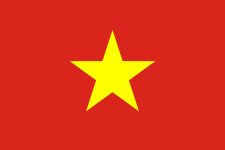 vn
vn en
en ja
ja ko
ko zh
zh